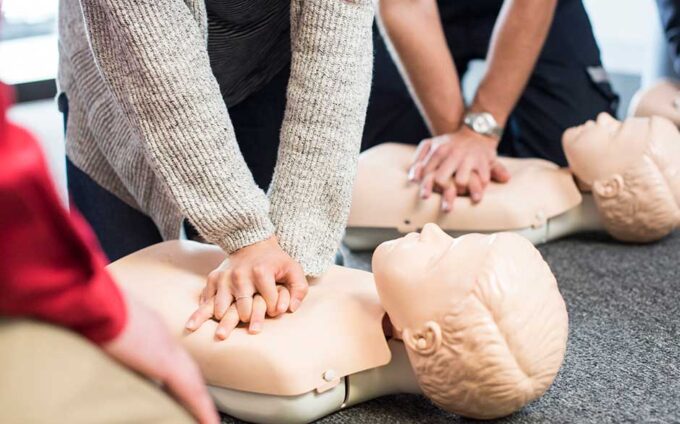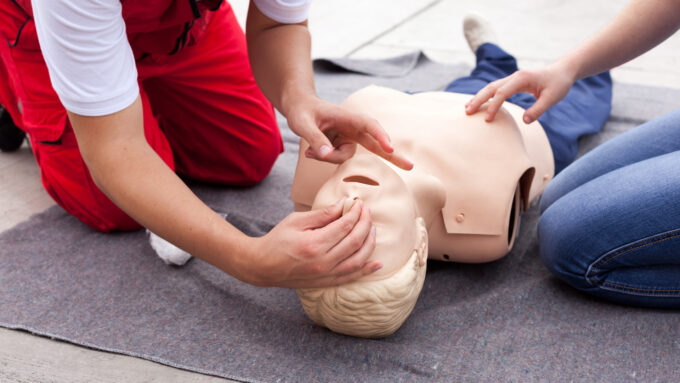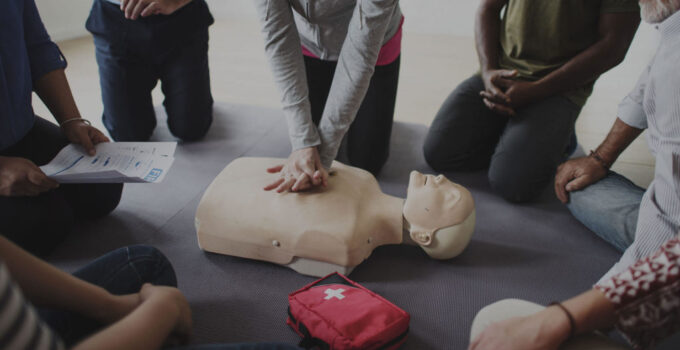If you could easily learn a new skill set that may one day save a person’s life, would you? For most, the answer is “yes.” Getting your OnlineCPRCertification is a convenient, affordable, and accessible way to give yourself the tools you need to save a life in the event of an emergency.
What Is CPR?

Source: nltfpd.org
Cardiopulmonary resuscitation (CPR) is an emergency lifesaving procedure used when a person is in sudden cardiac arrest. Sudden cardiac arrest is the abrupt loss of breathing, consciousness, and heart function. When this occurs, blood stops flowing to the brain and other vital organs, causing death within minutes.
If CPR is administered immediately following cardiac arrest, oxygen-rich blood can continue to flow until emergency medical technicians (EMTs) arrive on the scene to administer medical treatments or transport the individual to the hospital.
Why Should Everyone Know CPR?
Most everyone can benefit from learning CPR. Online CPR courses will help you learn how to cope and feel confident in stressful situations and how to administer lifesaving procedures to keep someone alive until medical help arrives.
Most Emergencies Happen at Home

Source: verywellhealth.com
Most emergencies that lead to cardiac arrest occur in everyday moments. In fact, 88% of all cardiac arrests outside of a hospital setting take place at home. Emergencies that may require CPR include:
- Choking
- Electrocution
- Head trauma
- Heart attacks
- Lung disease
- Near-drowning
- Poisoning
- Smoke inhalation
- Suffocation
Essentially, any situation in which a person stops breathing requires CPR administered quickly to increase a person’s chance of survival and recovery. When CPR is given in the first few minutes of cardiac arrest, a person’s chance of survival could double or even triple.
Not Enough People Know CPR
Since CPR was first used in 1740, it has saved countless lives. But even today, most Americans feel helpless in an emergency, unsure of what to do. An estimated 335,000 adult deaths in the U.S. each year are caused by sudden cardiac arrest outside of a hospital setting. But cardiac arrest isn’t always a death sentence—CPR saves lives.
People with CPR certification know lifesaving skills that have saved thousands of lives, and more lives could be saved if more people knew how to perform these essential measures. Getting your online CPR certification may make you someone’s hero.
Online CPR Certification Benefits

Source: nationalcprassociation.com
Online CPR training offers a flexible, convenient, and accessible way to get CPR certification. There are several benefits to choosing online CPR courses, including:
- Learn at your own pace. You decide how quickly you complete the lessons and course.
- Convenience. Access course material at a time and location that works for you.
- Flexibility. Review your course material and study when your schedule allows.
- Cost. Online CPR courses are often more affordable than in-person classes.
- Digital certification & access. Immediately after you complete the course materials, you can take an online, multiple-choice exam to receive your CPR certification. The card is available for download immediately after passing the exam.
The American Academy of CPR and First Aid, Inc., offers online CPR training courses at affordable prices. Call today to learn more.
How often should you get CPR training refreshers?
CPR training is an important life skill that everyone should learn. But once you’ve learned the basics, how often do you need to refresh your CPR training? The answer may surprise you. According to the American Red Cross, you should refresh your CPR training every two years. Even if you’re not a healthcare worker, it’s important to keep your skills up-to-date in case of an emergency. And if you are a healthcare worker, then refresher courses are even more essential. Not only do they help to keep your skills sharp, but they also ensure that you’re using the most up-to-date techniques. With so much at stake, there’s no excuse not to refresh your CPR training every two years.
How to do CPR on an adult, child, and infant

Source: indrisec.co.uk
When someone’s heart stops beating, it’s vital to start CPR right away. The sooner CPR is started, the better the person’s chances of survival. Here’s how to do CPR on an adult, child, and infant.
- Adult CPR: Place the heel of your hand on the breastbone in the center of the person’s chest. Place your other hand on top and interlace your fingers. Use your body weight to administer compressions at a rate of 100-120 per minute. If you’re not trained in CPR, you can also do chest compressions only (without rescue breaths).
- Child CPR: For children aged 1-8, place your hands in the same position as for adults, but use only one hand to administer compressions. For children aged under 1, place two fingers in the center of the child’s chest and give compressions at a rate of 100-120 per minute. As with adults, you can also do chest compressions only (without rescue breaths) if you’re not trained in CPR.
- Infant CPR: For infants, place two fingers in the center of the infant’s chest and give compressions at a rate of 100-120 per minute. As with adults and children, you can also do chest compressions only (without rescue breaths) if you’re not trained in CPR.
When to use CPR
Knowing when to use CPR can be the difference between life and death. The most important thing to remember is that CPR should only be used when there is no pulse, and the person is not breathing. If the person has a pulse but is not breathing, then CPR is not necessary. Sometimes, people may be hesitant to give CPR because they are worried about harming the person. However, it is important to remember that CPR cannot harm the person and that the benefits of giving CPR far outweigh the risks. When in doubt, always err on the side of giving CPR. It is better to give CPR and not need it than to need it and not give it.
CPR is an important skill for everyone to have. It can help save lives in emergency situations. If you don’t know how to do CPR, now is the time to learn. There are many classes available that will teach you how to properly administer CPR. The more people who are trained in CPR, the better chance we have of saving lives when a medical emergency occurs.







